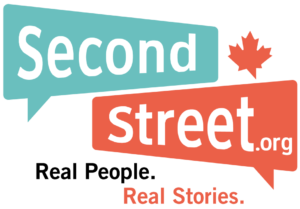FINANCIAL POST COLUMN: Too Many Canadians Die On Waitlists
After COVID-19 emerged in Canada, governments postponed hundreds of thousands of surgeries and medical appointments in order to focus on the pandemic. Like a slow drip from an IV bag, tragic stories started to emerge from coast to coast about non-COVID patients suffering — and even dying — after their appointments were postponed.
Jerry Dunham, an Alberta patient, died after his pacemaker operation was postponed, leaving behind two young children. Rosine Chouinard-Chauveau, an actress from Quebec, died after her unspecified surgery was postponed. In Nova Scotia, patient Robin McGee worried about going blind after the government postponed her cataract surgery.
My own organization had a role in bringing to light Judy Anderson’s tragic story. The retired Ontario nurse lost her daughter, Shannon, after she was forced to wait several weeks for a heart procedure. Incredibly, this was the second time Judy had lost a daughter due to excessive waits in the health-care system.
These stories are obviously tragic. But until recently they have been individual anecdotes. New research based on freedom of information requests includes actual government data on patients dying while waiting for surgery both during the pandemic and in the year leading up to it. The results show yet again that our health care system is in desperate need of reform.
SecondStreet.org asked health bodies across Canada for data on patients dying while waiting for surgery, procedures, diagnostic scans and appointments with specialists.
Although we weren’t able to gather data from Quebec, New Brunswick, Newfoundland and Labrador, and several well-populated health regions (e.g., Vancouver Coastal Health), we did identify over 2,300 deaths that occurred while patients were waiting for surgery during calendar year 2020.
The cases ranged from surgeries that could have saved a patient’s life (e.g., heart surgery) to cases that could have improved a patient’s quality of life (e.g., hip surgery). Data quality differs from hospital to hospital but a cursory review suggests a majority of the deaths involved appointments for quality-of-life procedures. In terms of pain and suffering, such cases probably are not as serious as life-threatening problems, but who among us would want to spend our final years stuck at home, living with chronic pain as we wait for hip surgery? Or spend our final years with clouded vision as we await cataract surgery?
In the data we did obtain, patients died after waiting from less than a month to more than eight years for the procedures they ended up not getting. Many died after waiting well beyond government targets for receiving treatment. For instance, in Nova Scotia 30 patients died while awaiting surgeries that may have saved their lives. In 22 of these cases, they had exceeded the recommended wait time when they died.
If we look at the entire period of April 1, 2019, to December 31, 2020 and also include cases where patients died while waiting for diagnostic scans and appointments with specialists, the number of deaths grows to more than 10,000 — which begins to approach the death totals from COVID-19 that caused us to shut down Canadian society for a year and a half.
Fortunately for our elected officials, several straightforward measures could help address this problem.
For starters, most governments could improve their tracking and disclosure of information on patient suffering. The wheel does not need to be reinvented. The Nova Scotia Health Authority does a good job in tracking patient data. Other provinces could copy its approach.
Second, governments could end the de facto ban on patients paying for health services outside the public system. This would give patients more choice and take pressure off the public system as some patients decided to pay for their procedures privately. Access to a wait list is not access to health care. Every other developed economy allows choice and, not surprisingly, provides better access than we do.
Third, governments could change the way they fund hospitals. Instead of cutting cheques annually and hoping for the best, they could fund hospitals based on their output. This would mean that every time a hospital performs, say, a hip operation, it would receive more funding. This method is not new. According to the Fraser Institute, more and more developed countries have embraced it over the past 30 years.
These options have been discussed in this country for years. We can only hope the pandemic will finally cause governments to shift from talk to action.
Colin Craig is president of the think tank SecondStreet.org.
This column was published by the Financial Post on July 22, 2021.
You can help us continue to research and tell stories about this issue by making a donation or sharing this content with your friends. Be sure to sign up for our updates too!


